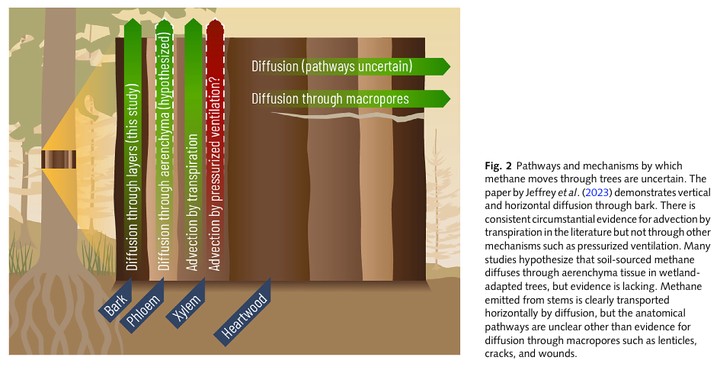Researchers barking up (the right) tree find new mechanisms controlling methane transport by woody vegetation

Abstract
Vegetated terrestrial and wetland ecosystems are among the largest natural sources and sinks of methane, but the mechanisms by which plants mediate methane production, consumption, and transport remain elusive (Vroom et al., 2022). Gas transport through the spongy stem tissues of herbaceous wetland vegetation is known to be the dominant pathway for methane moving from belowground soils to the atmosphere (Nisbet et al., 2009). Woody vegetation such as trees has only recently been recognized to move substantial amounts of methane to the atmosphere, and we understand little about the mechanisms by which gases move through the complex anatomy of woody tissues. Although the literature on methane emissions from trees is limited, there are enough studies on tree stem methane fluxes to understand the broad outlines of how emissions vary with factors such as climate, hydrologic setting, and major taxonomic class (Fig. 1). Largely missing are mechanistic studies on the regulatory role of wood anatomy on methane transport. In an article recently published in New Phytologist, Jeffrey et al. (2023; doi: 10.1111/nph.19404) help to fill this gap by demonstrating, for the first time, that bark characteristics can play a major role in mediating methane transport from soils through tree stems, emphasizing the influence of stem anatomy on gas transport.